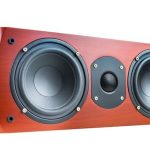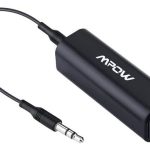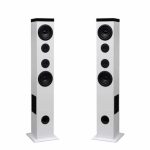The issue of audio quality measurement has been a long standing debate in many forums. Some of the frequently asked questions by participants in this debate include:
Can audio quality be measured?
Are sound quality measurements relevant?
Can consumers use audio measurements to make informed decisions on what to buy?
In an attempt to make audio devices work to desired standards, designers and engineers in the sound industry make use of metrics such as frequency response, echo, distortion, noise cancellation and delay. Usually a sound designer aims at creating a piece of sound equipment that achieves predetermined levels of each of these audio quality metrics. Therefore, audio quality measurements are indeed relevant from the very beginning of sound production.
As a demanding user of sound, whether a sound production expert or a fan of quality audio, you are set to gain a lot from understanding how to measure audio quality. There are various ways of doing so. Most of the methods that have been developed for this purpose not only measure quality but also provide easy-to-understand ratings for different sound quality metrics. The ratings are normally indicated on sound equipment or their manuals. For instance, every speaker will have its frequency response rating indicated somewhere either on the magnet, the manual, or on the package in which the speaker is delivered.
With knowledge on how to interpret and translate a rating into meaningful information about the underlying sound quality measurement metric, one can make well-informed choices when dealing with any sound equipment.
Common Sound Quality Measurements
There are many methods and tools for measuring sound quality. Whichever method you choose to use, being familiar with key terminology will help you to measure audio quality successfully. Here are some of the common terms used when evaluating sound quality:
i.Total Harmonic Distortion (THD)
THD measures the total amount of distortion produced by a system as sound is translated from the original signal to audible sound. It indicates how faithful an amplifier or speaker is in translating what is in an audio source, say a hard drive or disc, into sound.
A lower THD rating implies higher quality of sound. Most high-quality audio components have a distortion rating of less than 1%. For loudspeakers, the distortion rate can range anywhere between 1% and 5%. Subwoofers are associated with the highest distortion among all sound drivers. There are subs with distortion rates as high as 10%.
Human ears cannot measure distortion and differentiate distortion rates reliably especially at low bass levels. The details of THD measurement can be understood comprehensively only by sound engineers and technicians. It involves quantifying non-linear behavior of waveforms.
ii. Output Power
You might wonder: what has power got to do with audio quality? Well, if you have a little bit of experience with audio equipment such as speakers and amplifiers, you know of an important concept called RMS. Pick five speaker reviews at random and you will notice that the reviewers dedicated a significant portion of their reviews to discuss RMS.
RMS stands for Root Means Square. It is a measure of the amount of energy (in watts) that a channel in a sound system has. The RMS rating for a speaker indicates the amount of power that that speaker uses to reproduce sound for extended periods.
iii.Frequency Response
Frequency response is probably the most straightforward way to determine audio equipment’s capabilities. An assessment of the frequency response rating gives you an idea of how high or low the speaker can play. Thus, you can determine how the speaker contributes to the overall audio quality of the system that the speaker is a part. In other words, the frequency response of a speaker informs you how much value, in terms of audio quality, a chosen speaker adds to your entertainment system.
The human ear can hear sound between the frequencies of 20 HZ to about 20K HZ. Frequencies below 310Hz are bass frequencies and those between 310Hz and 12 kHz are midrange frequencies. Anything from 12 kHz and above are high frequencies.
So, how do you measure frequency response by listening?
It’s not difficult to gauge a speaker’s performance in terms of frequency response. Take an instance where you watching a movie. If you can hear explosions loud and clear during action scenes, then the speaker has great bass/low frequencies. If you are listening to music and can feel the impact of each instrument in the music, as well as human voice, then your speaker is an excellent mid-range performer. Finally, you’d know that a speaker is awesome at high-frequency audio reproduction if it projects cymbals and high notes in a clear and enjoyable way.
iv. Signal to Noise Ratio (SN Ratio)
Measured in decibels, SN ratio is the ratio of quality audio to noise (fidelity of the sound equipment). SN ratio is measured for many devices including CD/DVD players, receivers, etc. Devices with high SN ratio – 90 to 100 decibels – are viewed as having high fidelity to the sound source.
To understand the basics of SN ratio measurement, realize that everything around your audio device or system produces noise. A dB measurement can be attached to all of the sources of noise. For instance, a hair dryer produces approximately 70-90dB while a refrigerator contributes about 50dB of noise.
If you want to run some sound volume tests on your own, various dB meter apps are available for download and use on your smartphone. Such a tool is helpful when you are calibrating your home entertainment system.
v. Speaker Impedance
Measured in Ohms (symbol: Ω), speaker impedance is an indication of the amount of current that a speaker can draw. Most sound devices are rated 8 ohms or 4 ohms. A 4-ohm speaker (coupled with a good amp) is preferable if you are looking for higher quality sound, but it will be more expensive than an 8-ohm speaker of comparable type and size.
vi. Headroom
When someone asks about what a system can give in short bursts, they are asking about its headroom. For home cinema systems, the headroom figure is an important consideration as it gives an idea of the system’s ability to deliver thrilling experiences from explosions in action movies.
Listening: the holy Grail of measuring Audio Auality
While online and offline tools have been created for sound measurements, listening is widely known as the truest test of audio engineering. It is through hearing that you know the actual quality of sound. Also, listening is crucial in sound quality measurement because it allows you to determine whether or not the audio produced by a device is satisfactory by your standards.
Different people look for different things in sound. A musician will be keen to assess nuances and playing techniques, a music conductor focuses on the coordination of a particular orchestra, and a general music lover will listen to where the sound comes from.
When planning to purchase audio equipment, it is advisable to listen to many systems so that you can make useful comparisons between the devices in an array of choices. Another thing worth noting is that you should use the same recording when evaluating the performance of different sound equipment. If you notice an improvement in the way one stereo is producing sound compared to another stereo, then it follows that that stereo has higher audio quality than its contender.
Key Takeaways
- Audio quality is too complicated to be measured and analyzed using numbers alone.
- Measurements using numbers are vital especially in the early stages of design and engineering of a sound device, but listening is just as important if you want to end up with a truly enjoyable audio.
- Volume does not equal quality. Some people confuse loudness with sound quality. A speaker cannot be said to be delivering better quality sound just because it is louder than a comparable speaker. It would only be so if the speaker maintains the sweet spot of around 100dB even when the volume is turned up. In other words, the sound remains clean and clear. You don’t struggle with noises or ear-grinding frequencies, and no distortion can be identified.
Audio quality measurements are very important to various categories of sound users. Designers use them to specify the performance of a sound device. During the maintenance of sound equipment, engineers check each piece of equipment against its audio performance ratings to ensure that the device is working according to specification. Measurements taken during maintenance also help to know whether the defects in an audio path are within acceptable limits. Individuals who need to buy or hire sound systems for home use or events check audio quality measurements, and do their tests, so that they make a well thought-out decision when buying or hiring sound. Being well-versed with different audio quality concepts and measurement methods is crucial. Everyone wants great quality sound as it adds a good aura to any setting.
Michael Evanchuk is a San Francisco-based sound engineer with 20 years’ experience installing, troubleshooting, and repairing commercial, automotive, and household sound equipment. Evanchuk owns an auto stereo center, where he offers highly competitive car audio installation and repair services. He has written dozens of articles on different sound engineering topics, all of which have been published in leading journals, blogs, and websites.






